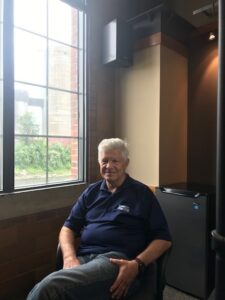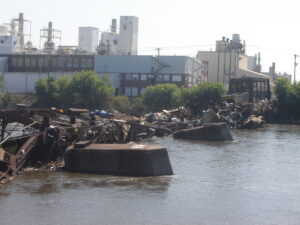In 2008, much of Iowa experienced such massive floods that 10 percent of Cedar Rapids was evacuated, books were being rescued from the basement of the University of Iowa Library, and homes were under water in Cedar Falls. Dozens of other Iowa communities faced flood waters to varying degrees, all remembering that it was only 15 years earlier that they had dealt with another massive emergency in the Midwest floods of 1993. After billions of dollars of damage and thousands of lost homes, Iowans were forced to confront the fact that so-called 100-year floods might in fact be far more frequent events of the future and that climate change was a reality for the Midwest as well as coastal states.
It was in this environment of concern about how Iowa would cope with future flood emergencies and disasters that the Iowa Legislature decided in 2009 to establish the Iowa Flood Center (IFC). Born of cooperative discussions between IIHR—Hydroscience and Engineering at the University of Iowa and state leaders, the Iowa Flood Center became a leading model for state technical outreach to communities regarding flood mitigation, flood awareness, and warning systems, including an extensive system of stream gauges. Centered at the Stanley Hydraulics Laboratory along the Iowa River, the Center manages the Iowa Flood Information System, a platform that gives communities across the state easy access to inundation maps, alerts, and real-time data on stream conditions.
Over intervening years, I have occasionally worked with staff at the Iowa Flood Center. In addition to their collaborative work in one flood recovery consulting project for the Iowa Economic Development Authority in which I participated, I also have hosted Associate Director Nate Young as a guest speaker in my University of Iowa School of Planning and Public Affairs class, “Planning for Disaster Mitigation and Recovery.” In every instance I have seen, IFC has been a class act. Visitors from other states have been intrigued with the Center as a model for their own states.
 It should be no surprise at this point that I decided early on that our film project, Planning to Turn the Tide, needed to include some content about the work of the Iowa Flood Center and the changes it has introduced to flood preparation and recovery in Iowa. On July 17, as David Taylor and I were making our way back east from Colorado, we stopped in Iowa City for the purpose of taping an interview with IFC Director Witold Krajewski, a veteran environmental engineer who has become intimately familiar with the hazard mitigation and planning needs of the hundreds of small communities, as well as larger cities, throughout a state that has seen more than its fair share of flood disasters. We also met with Kate Giannini, Iowa Watershed Approach Program Manager, about access for our film project to flood footage and other resources from the Iowa Flood Center that would help tell the story visually as well as in words.
It should be no surprise at this point that I decided early on that our film project, Planning to Turn the Tide, needed to include some content about the work of the Iowa Flood Center and the changes it has introduced to flood preparation and recovery in Iowa. On July 17, as David Taylor and I were making our way back east from Colorado, we stopped in Iowa City for the purpose of taping an interview with IFC Director Witold Krajewski, a veteran environmental engineer who has become intimately familiar with the hazard mitigation and planning needs of the hundreds of small communities, as well as larger cities, throughout a state that has seen more than its fair share of flood disasters. We also met with Kate Giannini, Iowa Watershed Approach Program Manager, about access for our film project to flood footage and other resources from the Iowa Flood Center that would help tell the story visually as well as in words.
Click here to watch the blog video about our visit to Iowa City.
As always, if you wish to support the Planning to Turn the Tide documentary film project, use this link or the QR code below to access our donations link on the APA website. We can use your help and will truly appreciate the support.
Jim Schwab


